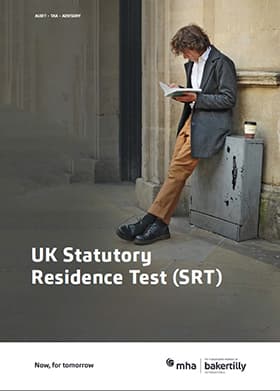
What is the UK Statutory Residence Test?
The Statutory Residence Test (SRT) has now been in operation in the UK for over ten years, having come into effect on 6 April 2013. It is used to identify whether an individual is resident, or not, in the UK, in line with UK domestic legislation. This is important to know as a person’s residence position impacts upon how they will be subject to tax in the UK.
Unlike a decade ago, when residence in the UK could be influenced by such things as an individual’s intentions, the SRT was introduced in a bid to remove ambiguity and to simplify the process of determining residence – you are either resident in the UK or you are not resident in the UK, based on your specific circumstances – but even so there are areas that can be open to interpretation and require additional thought.
In contrast to the domestic residence criteria in most other tax jurisdictions around the world, the UK SRT is comparatively complicated and warrants extra consideration, which this document goes some way to addressing. However, due to the potential complexity in determining UK residence, and the impact this may have on an individual’s tax position, professional advice should always be sought when needed and this document should not be used as a substitute.
Of course, there are also potential planning opportunities for those individuals with flexibility over when they choose to come to the UK or how much time they spend in the UK during a UK tax year. When approaching any new UK tax year, it is a good opportunity to assess your residence position, or the residence position of your employees’, to ensure there are no surprises or unexpected tax implications arising from their UK residence status.

Human Capital
Read more about Human CapitalRead moreDownload our free UK Statutory Residence Test guide
Whether you are new to the UK or have been in the UK for some time and your circumstances are set to change next year, it is important to understand what the SRT means for you and your tax position.







